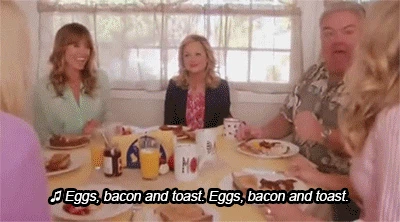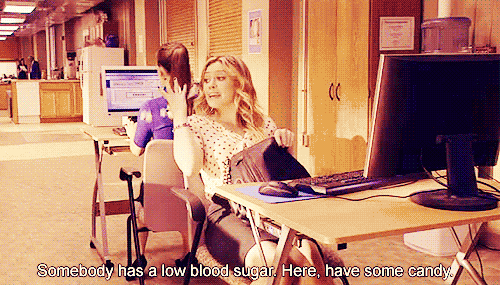Why The 30/30/30 Method Might Be The Key To Losing Weight This Year
Is “lose weight” on your list of New Year’s resolutions? If yes, the 30/30/30 method might be the routine for you!

The 30/30/30 method was made viral by human biologist, researcher, and biohacker Gary Brecka, but the concept was first coined by Tim Ferriss in his book titled The 4-Hour Body. In one of Brecka’s videos, he says, “I’ve never seen anything in my life strip fat off of a human being faster than this,” which is a bold claim, but he believes in this method so deeply that he says that he wishes he were the one to patent the idea. Apparently, if you do it for one month, you'll be able to see firsthand the amazing results.
So, what exactly is the 30/30/30 method and is it good for women? The goal is to eat 30 grams of protein within 30 minutes of waking up in the morning, followed by engaging in 30 minutes of steady-state cardiovascular exercise (think low-intensity exercises like walking), ensuring that your heart rate is at or below 135 BPM. You don’t want to jump into an extremely intensive workout right away because that would result in the loss of lean muscle, instead of fat burn. In addition to supporting weight loss efforts with science, this method seems to be beneficial for women specifically because it considers the importance of blood glucose and protein consumption, both of which greatly influence the delicate balance of female hormones.
Break-Fast
A lot of people will hit the pavement or the gym after overnight fasting without fueling their body because they think “calories in, calories out,” but this actually results in a loss of lean muscle. Essentially, for the first 20 minutes after you wake up, you have a small amount of blood sugar in your body to use for the initial energy to start your day, but after that 20-minute window, your body needs other fuel with which to power your body. It takes five hours to burn fat “but only three minutes to liquify lean muscle,” says Brecka. So, your body is going to dip into the most easily accessible source of energy, a.k.a. your lean muscle supply.
This is the problem with fasted exercise. Think of a car: It won’t drive if it doesn’t have gas. If you drive to work on empty, you’ll be driving on fumes (before your car stops), and in the process, you weaken your car. If you don’t give your body substantial energy to kickstart the day and to fuel your exercise, then it has no choice but to burn lean muscle, and there goes your fat burning efforts. To avoid this, prep breakfast ahead of time so you have options to pull out after waking up. Here are 7 protein-rich breakfasts to eat to lose weight and feel ready for the day.

Fasted Hormones
Running or working out on an empty stomach will also spike your cortisol, which will then affect your blood glucose levels and cause a dramatic drop in blood sugar, potentially making you feel lightheaded, dizzy, and nauseous. A 2015 study from the Journal of Physical Therapy showed that morning exercise after overnight fasting increased cortisol levels more than if the subject had eaten breakfast and then exercised. And because cortisol is the stress hormone, increased cortisol will negatively affect your blood glucose and your hormone balance, among other bodily functions.
Women’s hormones are significantly impacted by blood sugar and cortisol fluctuations, and a woman especially needs sufficient protein to manage not only her blood sugar and cortisol regulation but also to stabilize her cycle hormones, such as estrogen and progesterone. Protein provides the building blocks for healthy fertility as well as supporting a healthy and balanced gut microbiome, which is a factor in insulin resistance and weight management. In simple terms: you need protein to have good cycles, make healthy babies, digest well, and feel vibrant!
Your brain also needs blood glucose to function properly, and during exercise, your body needs glucose to fuel your muscles to work. Your cortisol levels are highest in the morning, and consuming a high protein breakfast will help lower those levels. If you engage in intense exercise without stabilizing your system with nutritional protein, then your cortisol, blood sugar, and even your blood pressure will suffer (or make you suffer).

Breakfast Ideas
You can include some healthy fats and carbohydrates in your breakfast, but it’s important that protein is the focus. Stick to clean, simple ingredients with minimal processing involved.
Stumped on how to get those 30 grams of protein for breakfast without downing a protein shake every morning? Check out these options:
Steak and eggs: About 3 oz. of steak and 2 eggs (boiled or scrambled). Cook steak ahead of time and store in the fridge for later use. Cut steak into strips, toss into eggs, and scramble with salt and pepper, or simply serve alongside eggs.
Boiled eggs: Approximately 6 grams of protein each, eggs can be prepped ahead of time, hard or soft-boiled, and stored in a sealed container in the fridge. Eat with sausage, smoked salmon, or breakfast hash.
Breakfast hash: 1/2 sweet potato + 3 chicken sausage links or 3 slices of turkey bacon alongside three large boiled eggs. You can use leftover sweet potato, sauté with diced onions (optional), and add turkey bacon bits or sliced sausage.
Collagen overnight oats + nut butter and berries: 1 scoop of collagen powder (20 grams of protein) with about 1/3 cup oats, 2/3 cup milk of choice, and 1 tbsp. nut butter (honey + berries to taste). Soak overnight in refrigerator, then eat cold or cook into oatmeal.
Smoked salmon and avocado toast: Use Ezekiel bread (5 grams of protein per slice), ½ an avocado, and about 3.5 oz serving of smoked salmon (Trader Joe’s has affordable smoked salmon packets).
Breakfast protein smoothie: Use a plant-based protein and/or collagen powder, nut butter (optional), frozen berries, and banana.
Greek yogurt with granola and berries.
Starting your day with substantial protein will sustain energy, help curb cravings, and keep you full longer! However, don’t get obsessed with numbers – try to get as close as possible to 30 grams of protein, but if there’s a gram or two more or less, it’s not the end of the world. The same applies to the exercise – if your heart rate goes over 135 bpm a couple of times, don’t sweat it. Just think of something calming and relaxing while you take the tempo down a notch.
Why Steady Exercise over HIIT?
For most women, a morning walk or a moderate workout like biking might be a better choice over a super intense workout for two reasons. First, your body is still digesting your morning fuel (those 30 grams of protein) and doing a HIIT sesh might result in stomach discomfort and interfere with your digestive hormones. Secondly, studies show that a steady and moderate workout after breakfast will result in a stable output of energy. A HIIT workout is meant to be followed by rest since it’s more intense and might feel draining initially. You can always hit it hard later, but when you’re starting off the day, you have to make sure you’re properly fueled, and moderate exercise will ensure a steady flow of energy throughout the day.

Closing Thoughts
Obviously, this isn’t an all-purpose, quick-fix solution to the “perfect bod,” so you should continue other good lifestyle habits as per usual. If you have a terrible sleep schedule, a bad diet, and chronic stress overload, any type of weight loss method is only going to take you so far. But if 2025 is the year you finally commit to a healthier lifestyle overall, this science-based bio hack beneficial to women might just be the perfect place to start.
Support our cause and help women reclaim their femininity by subscribing today.